I'm trying to combine Holoviews' Pointdraw functionality with its Sample functionality (I couldn't find a specific page, but it is shown in action here http://holoviews.org/gallery/demos/bokeh/mandelbrot_section.html)
Specifically, I want to have two subplots with interactivity. The one on the left shows a colormap, and the one on the right shows a sample (a linecut) of the colormap. This is achieved with .sample. Inside this right plot I'd like to have points that can be drawn, moved, and removed, typically done with pointdraw. I'd then also like to access their coordinates once I am done moving, which is possible when following the example from the documentation.
Now, I've got the two working independently, following the examples above. But when combined in the way that I have, this results in a plot that looks like this:
 It has the elements I am looking for, except the points cannot be interacted with. This is somehow related to Holoviews' streams, but I am not sure how to solve it. Would anyone be able to help out?
It has the elements I am looking for, except the points cannot be interacted with. This is somehow related to Holoviews' streams, but I am not sure how to solve it. Would anyone be able to help out?
The code that generates the above:
%%opts Points (color='color' size=10) [tools=['hover'] width=400 height=400]
%%opts Layout [shared_datasource=True] Table (editable=True)
import param
import numpy as np
import holoviews as hv
hv.extension('bokeh', 'matplotlib')
from holoviews import streams
def lorentzian(x, x0, gamma):
return 1/np.pi*1/2*gamma/((x-x0)**2+(1/2*gamma)**2)
xs = np.arange(0,4*np.pi,0.05)
ys = np.arange(0,4*np.pi,0.05)
data = hv.OrderedDict({'x': [2., 2., 2.], 'y': [0.5, 0.4, 0.2], 'color': ['red', 'green', 'blue']})
z = lorentzian(xs.reshape(len(xs),1),2*np.sin(ys.reshape(1,len(ys)))+5,1) + lorentzian(xs.reshape(len(xs),1),-2*np.sin(ys.reshape(1,len(ys)))+5,1)
def dispersions(f0):
points = hv.Points(data, vdims=['color']).redim.range(x=(xs[0], xs[-1]), y=(np.min(z), np.max(z)))
point_stream = streams.PointDraw(data=points.columns(), source=points, empty_value='black')
image = hv.Image(z, bounds=(xs[0], ys[0], xs[-1], ys[-1]))
return image* hv.VLine(x=f0) + image.sample(x=f0)*points
dmap = hv.DynamicMap(dispersions, kdims=['f0'])
dmap.redim.range(f0=(0,10)).redim.step(f0=(0.1))
I apologize for the weird function that we are plotting, I couldn't immediately come up with a simple one.